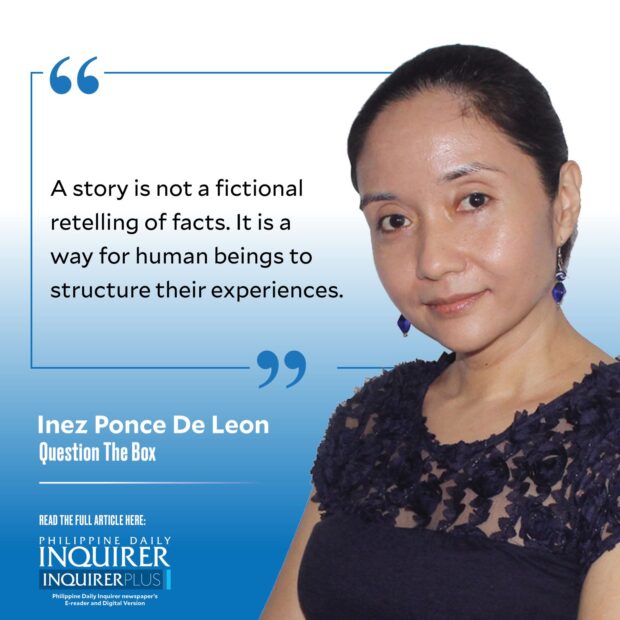Embracing stories, shaping meaning
 When I started out in science communication 20 years ago, I was a molecular biologist who thought that repackaging facts was the only way to communicate. I worked with other professionals in what was then a fledgling field: communicators and journalists, economists and sociologists, psychologists and artists.
When I started out in science communication 20 years ago, I was a molecular biologist who thought that repackaging facts was the only way to communicate. I worked with other professionals in what was then a fledgling field: communicators and journalists, economists and sociologists, psychologists and artists.
I once believed that scientists had to be at the helm because facts alone mattered. We simply had to make facts pretty for people to use them in their everyday decision-making. I’ve found, since then, that such assumptions have no basis, and can actually silence, and therefore oppress people.
This was something drilled deeper this week, when I attended two meetings that tackled storytelling.
First, I was part of a group interview with Princeton University’s Blue Lab, which seeks to tell the story of climate change from those who have experienced its impacts. Their researchers traveled to the country to document Supertyphoon “Yolanda” (international name: Haiyan) 10 years on, and are carrying out archival and field research, plus interviews, to create a multimedia site that brings together stories, satellite images, scientific data, and experiences.
I sat with two photographers: Veejay Villafranca, who covered Yolanda extensively, and whose photos have made the rounds across the world; and Aaron Vicencio, also a visual geographer and fellow faculty member at our department in the Ateneo, who has insights into the concepts of home, space, and place.
Together, we talked about our experiences in working on or studying Yolanda—but what emerged from the interviews were, as intended, stories.
The Basey caves where people hid to escape the storm’s wrath. The uplands of Guiuan where people crept into holes six feet deep and covered themselves with tarp to evade Yolanda. The origin of Tacloban’s name, from the water that would come and completely cover (taklob) the city. The fisherfolk who know the taste of typhoon-force winds. The citizens of a provincial barangay who gather at sundown to talk about the news, so that they can make decisions as a group on how and when to evacuate.
Scholars might call this indigenous knowledge, disaster subculture, or disaster memory, but they also comprise stories that are in danger of disappearing, all because the people in charge insist on simply disseminating information.
A story is not a fictional retelling of facts. It is a way for human beings to structure their experiences.
I first realized this when I walked into the social sciences: The bench sciences see a chaotic world and search for an underlying pattern in the mess, while the social sciences embrace the chaotic world and, in some cases, see how people make sense of it.
There is always a story to be told, and there are different ways to tell it: a mathematical formula, a trajectory comprising a journey from trials to triumph, photographs that capture a moment in time, a table of numbers showing variables clustering into factors.
Stories help us all, as humans, find meaning. This is something that the late academician Walter Fisher fleshed out in his narrative paradigm, which suggests that humans naturally find stories and tell them, because good stories are more convincing than a good argument built solely on facts.
Later in the day, I sat with a fellow scholar at our department to discuss her doctorate (Ph.D.) plans. Taking a Ph.D. means committing to a life of research, which means identifying the research that one wants to do. This was something she was struggling with, so I probed for her “why,” the deepest of her values that drove her scholarly pursuits.
In the end, her answers took shape around the idea of fans and storytelling, and how fans can make meaning of a story in ways that authors have no control over. This meaning translates into fan creation, a storytelling that bonds fans and allows them to make new sense of what they watch or read. They are not mere spectators, but active participants in the art they consume.
It was a day of storytelling, and a reminder of what communication is about. It is not simply repackaging facts, disseminating information, or ordering people to do things, like “unite” or “love.”
It’s about finding meaning, discovering how people make sense of the world, and never assuming anything about the stories that people can tell, if only they were given a chance.
—————–
iponcedeleon@ateneo.edu




















